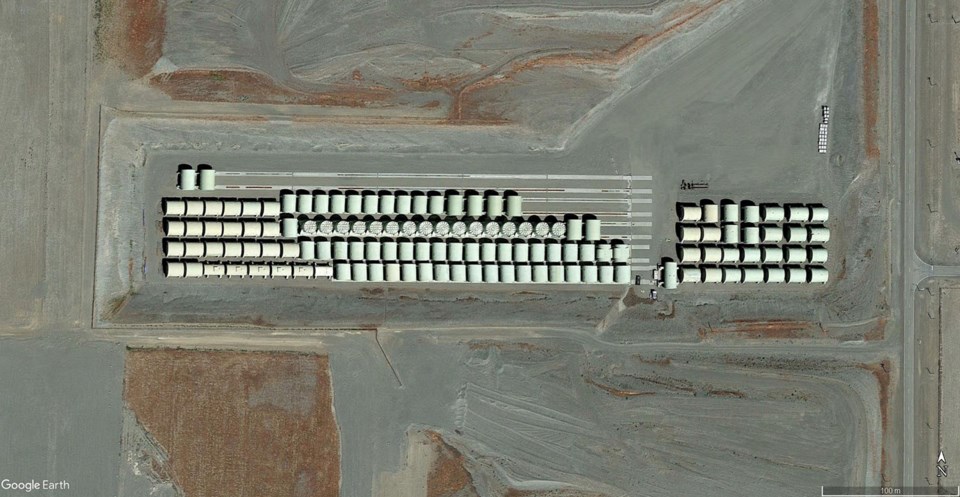In the recent speech from the Throne, the Saskatchewan government announced it is seriously looking at small modular nuclear reactors for future power generation in this province.
It is readily apparent that any small nuclear reactor design is going to have its roots firmly anchored in the United States Navy’s nuclear submarine program. And from that, there is much to be learned.
In 1955, the USS Nautilus changed the world, setting sail under nuclear power. Her revolutionary new power plant allowed her to be the first to sail under the icecap to the north pole.
The U.S. Navy was soon putting nuclear reactors in everything it possibly could. Eventually its entire fleet of submarines were nuclear powered, with about 200 nuclear submarines built.
For decades this was all done under the watchful eye of Admiral Hyman G. Rickover, father of the nuclear navy.
I don’t mention Rickover lightly. Until the early 1980s, he personally interviewed every officer who had anything to do with nuclear reactors (which meant, basically every officer to serve on submarines), and instilled a culture of perfection that still likely permeates to this day. The U.S. Navy’s nuclear safety record is effectively perfect. No sub or ship has been lost due to failure of its nuclear power plant.
The U.S. Navy also went heavy into nuclear reactors for its surface ships, to a point. It quickly realized that nuclear reactors were not practical for anything smaller than an aircraft carrier. They built nine cruisers with nuclear power plants, and that was that.
As for the carriers, the first was the USS Enterprise. It was built with a whopping eight nuclear reactors, each one essentially replacing a conventional boiler from previous oil-fueled carrier designs. They only built one of her, before going with a two-reactor plan for the Nimitz and Ford classes.
Why is all of this significant to Saskatchewan?
First, we know that small nuclear reactors are possible, functional, and repeatable. They have been at sea, in conditions where there is no backup, and no alternative, for 65 years.
But we also know that those entrusted with their operation, at least for the first three decades, did so in a culture that allowed zero mistakes, basically ever. You cannot talk about small nuclear power and not talk about Rickover’s overwhelming influence. This could be achieved in a military environment, where a highly structured and disciplined culture can enforce this sort of culture. It was also a situation where those who ran the reactors very lives of depended upon then their safe operation every second they were on board. They didn’t go home at the end of the day.
Can we expect the same of civilians working for a Crown corporation? Perhaps so. Obviously large-scale nuclear power has been operated by civilians since the mid-1950s as well.
Then there are the end-of-life issues. What do you do with these small nuclear reactors when they are done?
If you are the U.S. Navy, you dig a mammoth hole and bury them. Literally.
Smack dab in the middle of Washington State, on the shores of the Columbia River, is the very arid Hanford nuclear site. This is where the U.S. basically learned how to build nuclear reactors, and used them to create the material for tens of thousands of nuclear warheads. Its decommissioning is a decades-long process, and the immediate area will likely never be used for anything again, ever.
In the middle of this site, never to be used again, is Trench 94. You can find it by plopping this into Google: 46.5656006,-119.5201509.
There you will see 128 giant cylinders, painted white.
There’s a reason you don’t see many nuclear submarines as museum ships. When they retire a nuclear submarine, they chop it up into three sections, the forward, the reactor, and the aft. The defueled reactor is then loaded on a barge, shipped up the Columbia river, and transported to Trench 94. Sealed up for eternity, there it will eventually be buried as low-level waste. Ìý
All this is a lot better than what the Russians used to do, which was simply dump them somewhere in the Arctic Ocean. Now they are apparently following a strategy similar to Hanford.
If Saskatchewan is to begin using small nuclear reactors, we need to have a plan for their eventual disposal, up front. Does that mean putting them in a big hole somewhere? There are lots of holes leftover from coal mining near Estevan, but unlike very dry Hanford, these tend to fill up with water. Water that would rust steel reactor sections.
So what are our other options? Former uranium mines up north? Do we bury them somewhere else? And will they remain dry?
Submarines are also relatively small, tidy packages. The aircraft carriers are not. It took four years from keel laying to maiden voyage for the Enterprise. It’s going to take 10 years to take the Enterprisefully apart beyond what has already been done. They’re not even starting until 2034, 22 years after it was decommissioned. That means its disposal might take a total of 32 years, and billions of dollars.
Will small nuclear reactors for power generation be anywhere near a complicated? Not likely. I’m guessing they will be much closer to the submarine. Whatever it will be, we need to get these issues sorted out from the get-go, and not be wondering what we will do further down the road.
Ìý
Brian Zinchuk is editor of Pipeline News. He can be reached at [email protected].
Ìý
Ìý




